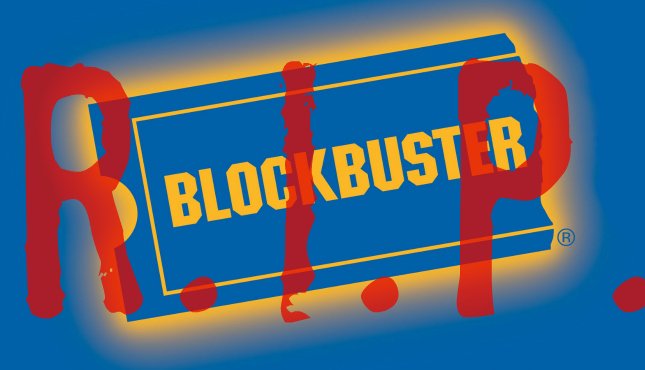
The Blockbuster Effect… Resist Digital Transformation and Risk Extinction
To really understand the impact of digital integration with society and commerce we need to go back to a time before smartphones, before the Internet of things and before Facebook.
Maybe more specifically the end of the 20th Century.
Online marketplaces were struggling to access to a global total of 281 million Internet users beginning to make sense of the dot.com era. The value of eCommerce was almost entirely ignored by small-medium businesses whilst mostly tech heads employed by big organisations embracing change, generated an Internet revolution driven by rapidly falling transaction costs as eCommerce effectively cut out the middleman in various stages of the supply chain.
With Web 2.0 slowly starting to emerge at the turn of the century a two-way exchange opened up between customers and organisations as the popularisation of review systems enabled quick and direct feedback. Consumers were now able to voice their opinions to a massive audience forcing businesses to be more accountable in their customer service processes.
Huge retailers began to see the value in digitally transforming their organisations and shook the marketplace by partnering with data agencies to track our online behaviour and develop audience profiles to market to consumers more efficiently.
Instant access to information powered forward-thinking businesses to enter specialised value markets and rock major players with unique methodologies and innovations, forcing them to imitate the same tactics to remain competitive.
Digital Darwinism Aka The Amazon Effect
In 2007, Facebook had only 50 million active users, compared to 1.86 billion now. MySpace ruled, and the world’s obsession with Keeping up with the Kardashian’s had only just begun.
Blockbuster’s $5.5 billions fortune was three years away from collapsing as one of the first victims of ‘Digital Darwinism’, a term coined by Brian Solis in 2011, that describes a new era where technology and society are evolving faster than organisations can naturally adapt.
In a highly competitive market it’s hard enough for a business to stay profitable, let alone investing time and resources in restructuring management to focus on addressing the disruptions technology brings to the market. Like it or not, it’s survival of the fittest in a competitive market, and if your business isn’t prepared to embrace new technologies and address shifts in behaviour, then you may as well get ready to carve RIP on your headstone, and book a dinner date with the Dodo.
Digital integration with consumer behaviour has caused major shifts in business models at a company and industry level and has been devastating for major players in the global economy unwilling to embrace change and transform their business digitally.
Do you want to know how to generate more leads from your online marketing? Learn with our ebook “The 30 Greatest Lead Generation Tips, Tricks & Ideas!”
Already we have seen both giant book retailer Borders and mammoth electronic consumer goods retailer Circuit City, file for bankruptcy at the turn of the decade for ignoring to adapt to market changes as retailing digital pioneers such as Uber, Netflix and Amazon swallowed market share. Not event Kodak could predict the selfie moment.
Our growing expectation is for businesses to fiercely compete for market share through innovations in technology that simplify our everyday tasks and provide rich experiences. It seems the consumer has never been more empowered than now.
Consumer Expectations = Faster, Better, Cheaper
Since the development of smartphone features we have seen technology create a massive shift in consumer behaviour. Specifically the way in which we socialise, shop and consume media and over time the overlap of human evolution and technology could not be more prominent than now. With market demand increasing year-on-year for faster Internet connections, quicker smart phones and better cross-device seamlessness we have come a long way since the release of the iPad in 2010.
And this is great, right? As customers we expect everything to be faster, smaller, cheaper. We presume technology will continue along the path of Moore’s Law, essentially describing a state where electronics’ capabilities double every two.
These are our expectations as consumers in 2017, and there is no evidence to suggest we are slowing down, as we seem to await huge innovations in product development on a quarterly basis.
The power and rate of which technology has progressed over the years has been too fast for society to adapt to. As a result businesses that have resisted investing time and resources into digital transformation have stood poised to fall by ignoring the commercial value of the digital economy.
So what does all this mean? It means that long-established business models are no long viable. We are bound to think digitally and businesses need to anticipate changes in the marketplace and digitally transform business operations.
Want to survive digital disruption? Check out our article that outlines three tips on how to stay ahead of the curve.
Download your free eBook: 30 Greatest Lead generation Tips, Tricks & Ideas
Mat McCoy
Account Executive
Author Bio: Mat is a digital marketing specialist whose passion for connecting with consumers through online channels is perhaps only outmatched by his love of backyard cricket. Before embarking on a career in search marketing he joined BizWisdom from a creative advertising agency where he specialised in digital production and multi-channel campaign management. When he isn’t searching for new ways to reach online marketplaces for his clients, you’ll find him out and about keeping fit, discovering new music, movies and local hangouts around Melbourne.




